Ever wondered how NASA manages to make sleep a priority in the hustle and bustle of space missions? In this article, we’re diving into eight intriguing ways they design sleep-friendly spaces, sharing insights that could help you create your own cozy sleep environment. Get ready to borrow some of their clever tricks for a better night’s rest!
Comfortable Sleeping Gear
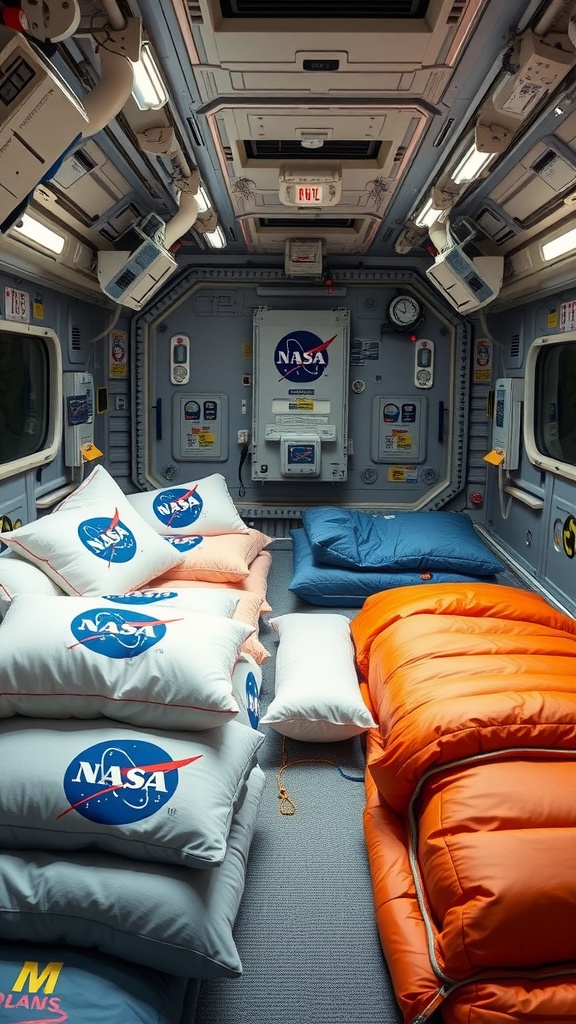
Navigating the cosmos means dealing with some unique challenges, especially when it comes to sleep. Just look at the image of this cozy sleeping area designed by NASA! It’s not your typical bedroom, but it’s equipped to ensure astronauts rest well.
The bright NASA pillows piled up give a sense of comfort and familiarity. Softness matters, especially in space where stress can be high. These pillows are designed to support the head and neck, making it easier for astronauts to drift off, even in zero gravity.
Additionally, the colorful sleeping bags, like the bright orange one, provide warmth and a sense of security. It’s like a hug that you can take anywhere! These bags are made to handle temperature changes in a space environment, keeping astronauts cozy.
Notably, the layout of the space is crucial. The setup is practical yet inviting, showing how NASA prioritizes comfort. In a confined space, creating a restful atmosphere is key for optimal performance. This image highlights how every detail is crafted for a good night’s sleep, even in the most challenging environments.
Sleep Hygiene Protocols
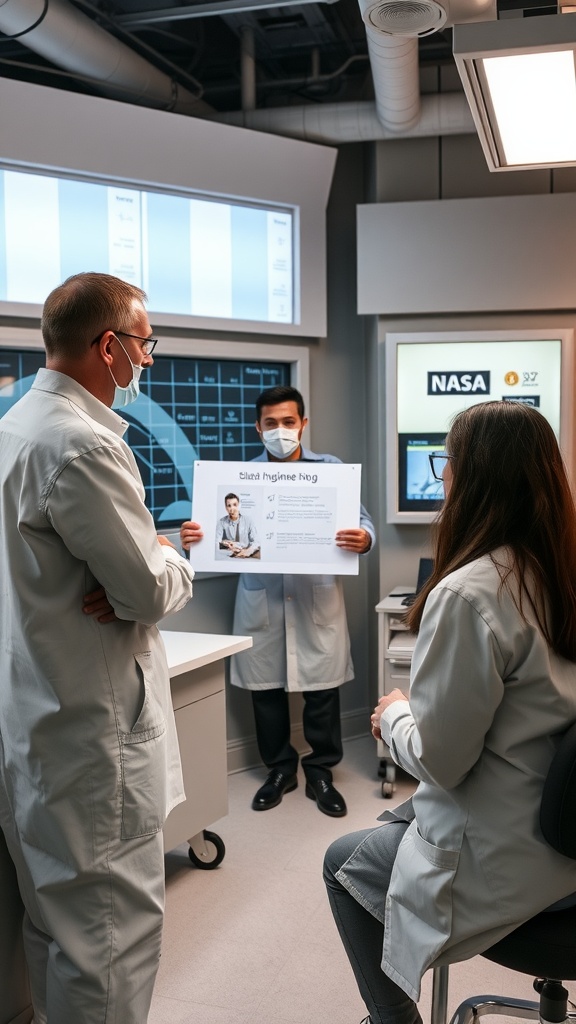
In the image, we see a group of professionals engaged in a discussion about sleep hygiene. One person is holding a poster that likely outlines key points related to promoting better sleep health. This setup hints at the seriousness with which NASA approaches sleep protocols, especially for astronauts who spend extended periods in space.
NASA recognizes that a good night’s sleep is crucial for the performance and well-being of their crew. Their sleep hygiene protocols are tailored to create environments that encourage restful sleep, even in the unusual conditions of space.
One critical aspect of these protocols is the emphasis on maintaining a consistent sleep schedule. Astronauts are encouraged to go to bed and wake up at the same time each day, helping their bodies adapt to the routine. This consistency can make a huge difference in sleep quality.
Another important element is the management of light exposure. In space, where natural light is limited, NASA focuses on using artificial lighting to mimic the day-night cycle. This helps regulate the body’s internal clock and enhances sleep readiness.
Moreover, NASA suggests creating a comfortable sleep environment. This includes minimizing noise and ensuring that sleeping quarters are dark. Even small adjustments, like using eye masks or earplugs, can significantly improve sleep quality.
Lastly, physical and mental relaxation techniques are encouraged. Astronauts learn to engage in calming activities before bedtime, such as reading or breathing exercises. These practices can help ease the transition into sleep.
Acoustic Design for Sound Sleep
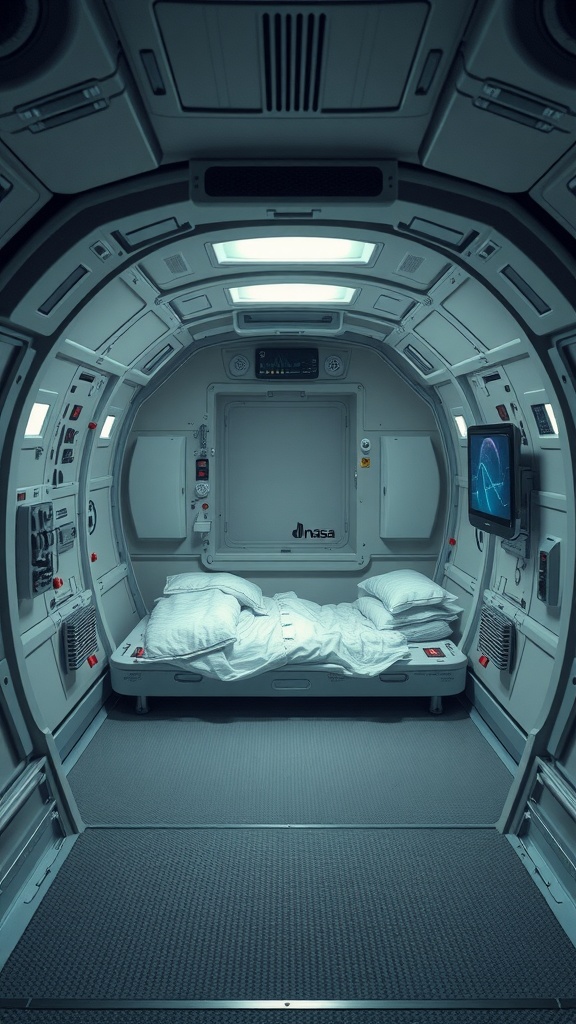
When it comes to sleep, sound is a big deal. This NASA-designed sleeping pod showcases how critical acoustic design is in creating a peaceful environment. The smooth, streamlined walls of the pod help to minimize noise, making it ideal for astronauts who need undisturbed rest in the chaos of space.
Notice the clean lines and lack of clutter? This isn’t just about aesthetics. A simple design aids in sound control, allowing for fewer distractions. The materials used in the pod are chosen not only for durability but also for their sound-absorbing properties.
In addition, the layout is strategic. By keeping the sleeping area enclosed, NASA can effectively reduce outside noise. The space is designed to create a tranquil bubble, shielding astronauts from the hum of machinery and other potential disturbances.
For those of us on Earth, we can take a cue from this. Creating a serene sleeping space is all about controlling sound. Whether it’s using heavy curtains, soundproof panels, or simply turning off electronics, we can mimic this acoustic approach at home.
Adaptive Lighting Solutions
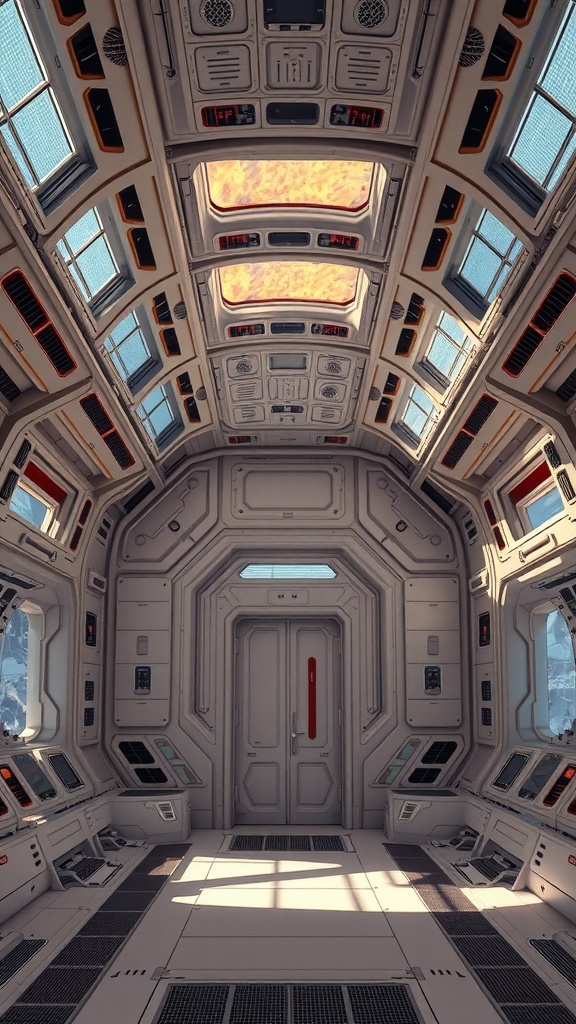
NASA understands that light affects our sleep patterns. In space, where natural light is limited, they use adaptive lighting solutions to create a comfortable environment for astronauts. The image shows a sleek spacecraft interior with large windows and a bright, airy feel.
The design features windows that mimic natural light, which helps regulate the body’s circadian rhythms. This is crucial for maintaining healthy sleep cycles, especially in an environment where day and night can be difficult to distinguish.
Moreover, the use of soft, adjustable lighting allows crew members to customize their environment. They can dim the lights for rest or use brighter settings for work. This flexibility is key to ensuring that astronauts can both rest and stay alert when needed.
Incorporating such adaptive lighting solutions can inspire us to rethink our own spaces. By using smart bulbs or adjustable shades, we can create a more relaxing atmosphere at home. Just like in space, controlling light can lead to better sleep and overall well-being.
Temperature Control Innovations
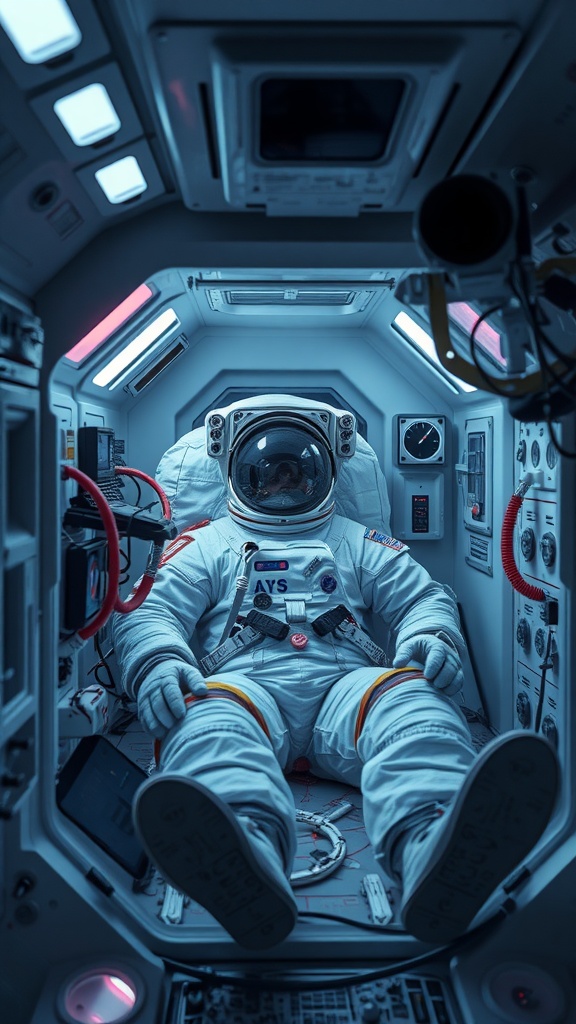
Have you ever thought about how astronauts manage to sleep in the vastness of space? The image captures an astronaut relaxed within a habitat designed to mimic the comforts of Earth, focusing heavily on temperature control.
In space, temperatures can vary drastically, making it essential to create a stable and comfortable environment. NASA has developed advanced systems to regulate temperatures, ensuring that astronauts can enjoy restful sleep. This is crucial for their physical and mental health during long missions.
One of the strategies involves using insulation materials that keep the cabin warm when needed and cool when temperatures rise. The design also includes adjustable air conditioning units that allow for precise temperature settings, catering to individual preferences.
Moreover, the layout of the living spaces plays a vital role. By placing sleeping quarters away from equipment that generates heat, astronauts can avoid disturbances. Coupled with soft lighting and noise reduction measures, these innovations help create a sleep-friendly atmosphere.
If you’re looking to enhance your own sleep environment, consider adjusting the temperature settings in your bedroom or investing in quality bedding that helps regulate body heat. After all, a good night’s sleep is as important on Earth as it is in space!
Weightless Sleep Experiences
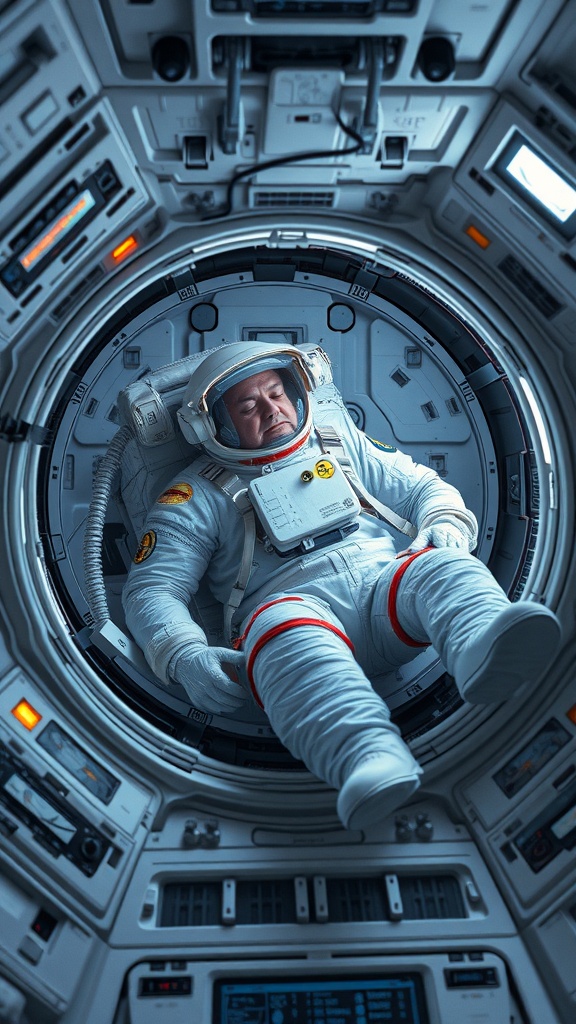
Imagine drifting off to sleep while floating in a cozy capsule, surrounded by the hum of machinery and the soft glow of control panels. This is not just a sci-fi dream; it’s a reality for astronauts onboard the International Space Station. In weightlessness, the body experiences a completely different way of sleeping, which NASA has studied to create the best sleep-friendly environments.
In the image, we see an astronaut relaxing in a sleeping bag designed for space travel. The unique design helps keep them secure while they snooze, preventing them from floating around in their sleep. Without gravity, traditional sleeping positions don’t apply. Instead, astronauts can sleep in any position they feel comfortable.
NASA has figured out a few tricks to enhance the sleep experience in space. For starters, they use special sleeping quarters that minimize noise and light, creating a calm environment. Astronauts can also customize the temperature of their sleeping area, making it more like home.
But it’s not just about the physical space. NASA pays close attention to the psychological aspects of sleep in space. They encourage astronauts to stick to regular sleep schedules and use relaxation techniques before bedtime. This helps maintain mental well-being during long missions.
Incorporating Nature into Design
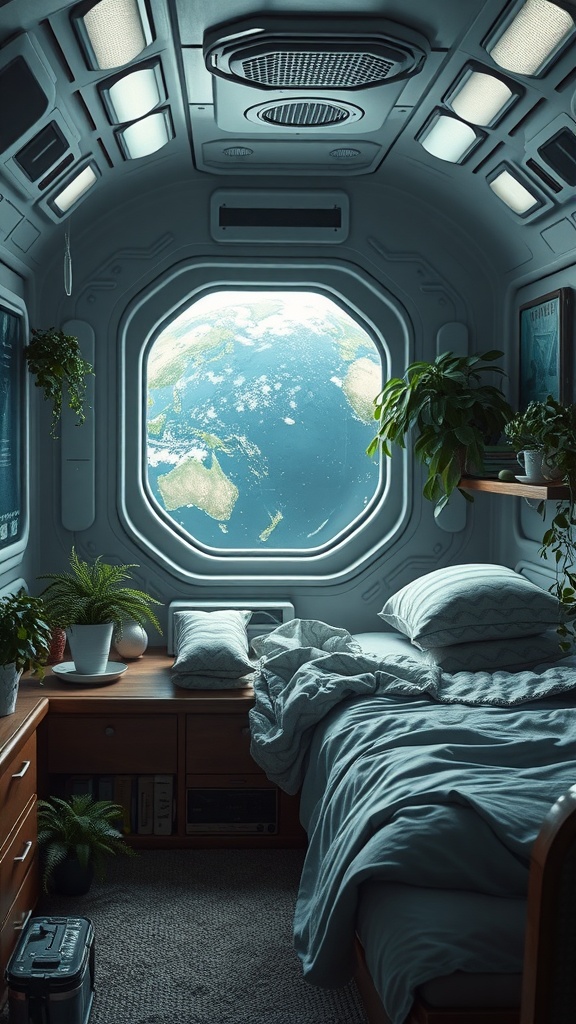
NASA’s approach to creating sleep-friendly spaces often involves a key element: nature. In the image, we see an inviting sleeping area that showcases plants and a stunning view of Earth through a large window. This design isn’t just for looks; it plays a crucial role in promoting relaxation and well-being.
Having greenery around can significantly affect mood and stress levels. The plants in the room serve both aesthetic and psychological purposes. They can improve air quality and bring a touch of life into the otherwise sterile environment of a space station. The calming presence of plants can help astronauts unwind after a busy day of research and exploration.
Another fantastic feature is the view of Earth. Gazing at our planet can evoke feelings of connection and tranquility. This scenery is not only visually pleasing but also reminds astronauts of their home, which can be comforting while living in a confined space. It’s all about creating an environment that fosters relaxation and a good night’s sleep.
Personalized Sleep Tracking Technology
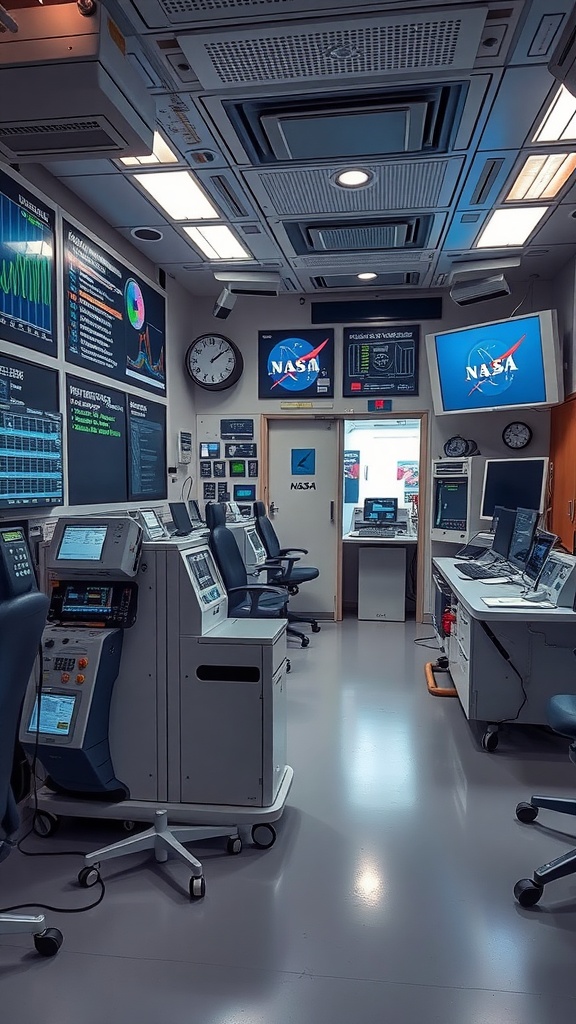
Nasa’s approach to sleep is both scientific and personalized. In the image, you can see a workspace dedicated to monitoring and analyzing sleep data. This high-tech environment showcases how vital sleep is for astronauts’ performance.
In space, every minute counts, and a good night’s sleep can make all the difference. Personalized sleep tracking technology helps researchers understand individual sleep patterns and needs. The displays and equipment in the image are crucial for logging various metrics.
For astronauts, this technology tracks everything from heart rates to sleep cycles. By analyzing this data, NASA can tailor sleep strategies to each astronaut, ensuring they are always at their best, even in the challenging environment of space.
This focus on personalization might inspire you to explore sleep tracking options for yourself. Smart devices and apps now offer similar insights. Why not take a page from NASA’s book and enhance your own sleep routine?